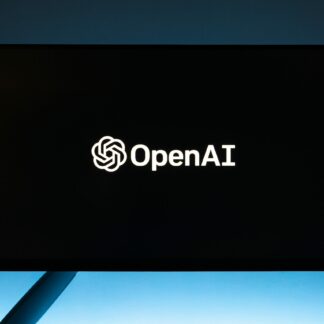
Software development has become an undeniably significant part of digital transformations, and many changes facilitate this. Research by Laato et al. notes that software development, both as an industry and a profession, has emphasized more on scalable and data-driven solutions.
This is made possible by integrating emerging technologies like automation, machine learning, and cloud computing. There is also the increasing convergence of IT and non-IT industries, as sectors like healthcare that are traditionally not software-intensive have shifted from manual to digitized processes.
All of these changes and drivers have implications for the key software development trends in the year 2023, from new programming tools and platforms to the growth of software companies.
1. Decline in demand for no or low-code platforms
Due to a shortage of coding talent and the need to democratize software development, no and low-code platforms have proliferated over the years. These democratized solutions that can be used for day-to-day operations include website builders like Wix, ecommerce platforms like SquareSpace, and design tools like Canva.
However, more and more developers are also starting to realize the limitations of no or low coding. There are unique security challenges that crop up when organizations adopt these easy-to-use platforms without explicit approval from IT, leading to the creation of unsafe applications and oversight in access controls. No and low-code platforms also have a narrow range of use cases, thereby affecting the flexibility and customization options for developers and business users.
2. Tools for speech recognition in web applications
Aside from improving the efficiency of organizations’ day-to-day operations, software development can also be harnessed to increase the usability and accessibility of applications. A previous look at the SpeechKit package for speech recognition and synthesis has shown that the JavaScript Web Speech API makes it possible for web apps to work with voice data.
Web Speech API simplifies the once-tedious task of coding voice-activated commands and text-to-speech interfaces. With other features, such as the ability to generate SSML from text, developers can also fine-tune the text-to-speech output attributes in terms of pitch, speed, volume, and more. This enhances and personalizes the overall user experience for web applications with speech recognition software.
3. Growth potential for software industry traffic
Despite the demand for software development in various industries, the software industry itself has been facing a decline in website traffic. As indicated by Search Engine Journal’s report on software industry traffic, worldwide monthly visits to the websites of top software companies in the US have decreased by more than 1 billion. Fortunately, despite the decline in numbers, the overall quality of website traffic has increased in terms of visit duration and the number of pages seen per visit.
To fully leverage this potential for growth, software companies have to tailor their digital marketing practices to suit consumer trends and customer journeys. Ayima states that integrating SEO and PPC strategies is a way to increase conversion rates and customer growth while still making significant cost savings. By merging data sources and using PPC data to see which SEO keywords are profitable and must be focused on, companies can optimize their content and investments in the areas that truly matter, therefore reducing wasted spend.
4. AI-assisted security testing
Software testing is a crucial part of the software development process, enabling developers to conduct performance tests and risk management. Among the software testing trends outlined by InfoQ, the emerging technology of artificial intelligence (AI) is particularly useful in security testing. Sophisticated AI algorithms can be deployed to detect cybersecurity threats like phishing attacks. By actively looking for anomalous patterns or behaviors in systems and access controls, AI can create real-time offensive capabilities against potential cyber-attacks.
With the growth of software development as an industry, there comes a set of unique challenges and opportunities, namely the emergence of new roles focused on digital marketing, data analytics, and AI. Nevertheless, it is up to software developers and the industry as a whole to be equipped for these changes so that they stay ahead in the global digital economy.
Follow Me On Social Media
Follow Me On Youtube!
Get Your Next Domain Cheap & Support The Channel
I use Namecheap for all of my domains! Whenever I need a cheap solution for a proof-of-concept project I grab a domain name for as little as $1! When you sign up and buy your first domain with Namecheap I get a commission, it’s a great way to get a quality service and support this platform!
Get Your Next Domain Cheap
CLICK HERE
Join The Newsletter
By joining the newsletter, you get first access to all of my blogs, events, and other brand-related content delivered directly to your inbox. It’s 100% free and you can opt out at any time!
Check The Shop
You can also consider visiting the official #CodeLife shop! I have my own clothing/accessory line for techies as well as courses designed by me covering a range of software engineering topics.
-
Product on sale
 GPT Genie: A Solo Developer’s Guide to Mastering ChatGPT$1.99
GPT Genie: A Solo Developer’s Guide to Mastering ChatGPT$1.99 -
 These Fingers Unisex t-shirt$23.55 – $31.55
These Fingers Unisex t-shirt$23.55 – $31.55 -
 #CodeLife AirPods case$15.00
#CodeLife AirPods case$15.00 -
 Embroidered #CodeLife Champion Backpack$44.50
Embroidered #CodeLife Champion Backpack$44.50 -
 #CodeLife Laptop Sleeve$25.00 – $28.00
#CodeLife Laptop Sleeve$25.00 – $28.00 -
 #CodeLife Unisex T-Shirt$20.00 – $22.00
#CodeLife Unisex T-Shirt$20.00 – $22.00 -
 #CodeLife Unisex Joggers$31.50 – $33.50
#CodeLife Unisex Joggers$31.50 – $33.50 -
 Cuffed #CodeLife Beanie$20.00
Cuffed #CodeLife Beanie$20.00 -
 Unisex #CodeLife Hoodie$36.50 – $38.50
Unisex #CodeLife Hoodie$36.50 – $38.50

